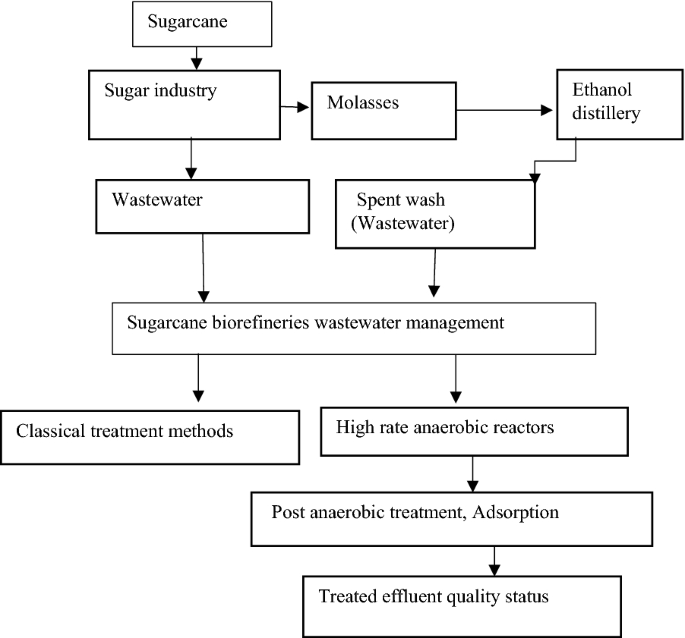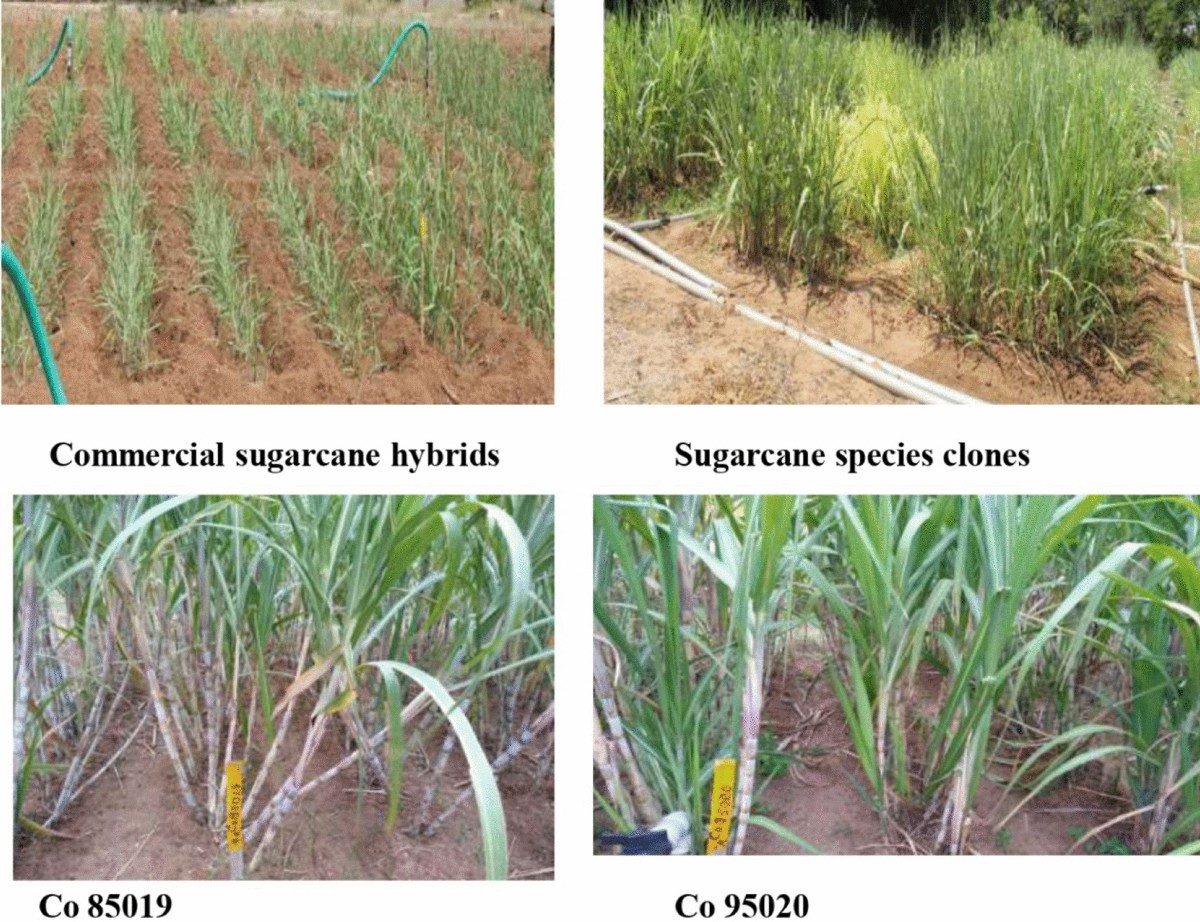Discover the Cutting-edge Benefits of Products From Sugarcane for Sustainable Living
Sugarcane has become a pivotal resource in the mission for lasting living. Its varied applications extend biodegradable packaging, renewable resource, and much healthier food alternatives. As markets look for environmentally friendly alternatives, sugarcane's flexibility offers encouraging solutions. Nevertheless, truth potential of sugarcane expands past its existing usages. Exploring its cutting-edge benefits can reveal brand-new paths towards a much more sustainable future. What various other possibilities might this impressive plant hold?

The Rise of Sugarcane as a Sustainable Source
As international recognition of ecological concerns grows, sugarcane has actually become a famous sustainable source. This flexible crop uses an array of advantages that add to green practices. Sugarcane is a sustainable resource, with the ability of prospering in varied climates while absorbing carbon dioxide, thus reducing greenhouse gas emissions. Its quick growth cycle permits for constant harvesting, resulting in a continuous supply of raw material.Additionally, sugarcane farming usually calls for much less water compared to other crops, making it an effective alternative in water-scarce regions. The byproducts of sugarcane, such as bagasse and molasses, can be repurposed for numerous applications, minimizing waste and advertising round economic climate concepts. Additionally, advancements in agricultural techniques have brought about even more sustainable farming methods, additionally enhancing sugarcane's environmental account. As consumers significantly look for sustainable alternatives, sugarcane stands apart as a practical option for those dedicated to minimizing their eco-friendly footprint.
Eco-friendly Product Packaging Solutions
Exactly how can biodegradable product packaging remedies change the method customers approach sustainability? By utilizing sugarcane-based materials, these innovative services use an engaging option to traditional plastics. Eco-friendly product packaging made from sugarcane breaks down naturally, noticeably lowering land fill waste and greenhouse gas exhausts. As consumers end up being significantly conscious of their ecological effect, the need for lasting product packaging proceeds to rise.These sugarcane-derived items not just serve practical objectives yet likewise line up with eco-conscious consumer values. They provide a substantial way for businesses and individuals to add to a round economy, promoting resource effectiveness and minimizing ecological footprints. Furthermore, as markets embrace eco-friendly options, they promote a culture of sustainability that resonates with an expanding demographic looking for responsible choices.In significance, naturally degradable packaging services from sugarcane stand for a vital action ahead in lasting practices, equipping consumers to make eco-friendly choices without sacrificing ease or top quality.
Renewable Energy Generation From Sugarcane
A significant portion of sustainable energy generation can be originated from sugarcane, showcasing its convenience past conventional farming uses. Sugarcane biomass, consisting of bagasse and leaves, is a powerful resource for bioenergy manufacturing. This biomass can be converted right into biofuels such as ethanol, which acts as a cleaner option to fossil gas. In addition, the combustion of sugarcane byproducts creates heavy steam and electricity, providing an energy source for sugar mills and neighboring communities.The farming of sugarcane additionally adds to carbon sequestration, as the plants take in carbon dioxide during their development cycle. By making use of sugarcane for energy, waste is reduced, and sustainable practices are urged. This eco-friendly power strategy not only sustains energy requirements however also advertises country advancement, developing work in bioenergy markets. On the whole, sugarcane sticks out as a principal in the change to sustainable power remedies, aligning with worldwide initiatives to decrease carbon footprints.

Eco-Friendly Textiles and Fabrics
Environment-friendly textiles and fabrics originated from sugarcane present an encouraging option to standard products. These naturally degradable choices not just minimize ecological impact but also provide sturdiness and efficiency comparable to standard materials. Sustainable production procedures even more boost their appeal, making them an integral part of a lasting way of living.
Biodegradable Fabric Options
Why is the modification towards naturally degradable material choices important for sustainable living? The boosting awareness of ecological degradation has actually triggered a search for options to conventional textiles, which frequently add to air pollution and waste. Eco-friendly fabrics, originated from renewable energies such as sugarcane, use an encouraging option. These products decompose naturally, minimizing garbage dump accumulation and lessening environmental effect. Furthermore, they can aid lower carbon footprints and reliance on nonrenewable fuel sources. As customers end up being much more eco-conscious, the demand for sustainable textiles grows, motivating manufacturers to invest and introduce in naturally degradable choices. This adjustment not only supports sustainable techniques yet likewise promotes a circular economic climate, leading the way for an extra accountable approach to Continue style and fabric manufacturing.
Toughness and Performance
Longevity and performance are important aspects when reviewing environmentally friendly fabrics and fabrics. Sugarcane-derived products show excellent toughness and durability, making them appropriate for numerous applications. These fabrics frequently exhibit exceptional moisture-wicking properties, which improve convenience in day-to-day wear. Furthermore, their all-natural fibers add to breathability, ensuring that garments stay fresh and wearable even in requiring conditions. The efficiency of sugarcane-based textiles extends to their resistance to put on and tear, permitting items to keep their integrity over time. Moreover, these environmentally friendly textiles can be dealt with to improve UV security and discolor resistance, satisfying the useful needs of consumers without compromising sustainability. Eventually, sugarcane textiles supply a harmonious balance of durability and performance, attracting eco aware people.
Lasting Manufacturing Procedures
The remarkable resilience and performance of sugarcane-derived fabrics are matched by sustainable production procedures that prioritize click reference environmental duty. These procedures utilize renewable energies, lessening reliance on fossil fuels and lowering carbon footprints. By taking advantage of the byproducts of sugarcane growing, suppliers can develop eco-friendly textiles while promoting waste reduction. Advanced techniques, such as water-efficient dyeing and biodegradable therapies, further enhance the sustainability of these textiles. Furthermore, using safe chemicals assurances that the production process does not hurt ecological communities or human health. This commitment to sustainability not just attract ecologically conscious customers yet additionally supports regional economies by promoting sustainable farming techniques. On the whole, sugarcane-derived fabrics stand for a considerable step towards a greener future in the fashion industry.
Sugarcane-Based Biofuels and Their Influence

Sugarcane-based biofuels have actually arised as a considerable different energy source, offering a sustainable solution to the globe's growing energy needs. These biofuels, originated from the fermentation of sugarcane juice or molasses, offer an even more sustainable choice contrasted to nonrenewable fuel sources. Their manufacturing process produces lower greenhouse gas exhausts, adding to environment modification reduction efforts.Additionally, sugarcane biofuels can improve energy protection by diversifying energy sources and minimizing dependancy on imported oil. The farming of sugarcane likewise promotes rural advancement, producing tasks and promoting neighborhood economies.However, worries regarding land use and food competitors persist, as boosted biofuel manufacturing might impact food supply chains. Sustainable farming practices are vital to stabilizing these making certain and competing interests that biofuel production does not threaten food safety and security. On the whole, sugarcane-based biofuels represent an appealing avenue for a greener energy future, gave that their social and ecological you could look here implications are carefully handled.
Healthier Alternatives: Sugarcane in Food Products
While several customers look for much healthier alternatives in their diet plans, sugarcane items offer a nutritious alternative to fine-tuned sugars and sweetening agents. Stemmed from the natural extraction of sugarcane juice, these items keep essential nutrients, consisting of minerals and vitamins, that are usually lost in processed sugars. Sugarcane consists of antioxidants and nutritional fiber, adding to overall health and wellness.Many health-conscious people are turning to sugarcane syrup and jaggery, which offer a lower glycemic index compared to traditional sugars, making them suitable for those managing blood sugar level degrees. Furthermore, sugarcane-derived sugar can improve the flavor of various dishes without the adverse effects related to fabricated additives.This change in the direction of all-natural artificial sweetener not only promotes much better dietary choices yet likewise aligns with lasting living techniques, as sugarcane is a renewable source. Sugarcane items are emerging as beneficial alternatives in the domain of food products.
The Future of Sugarcane in Lasting Developments
The future of sugarcane is poised to incorporate cutting-edge applications that extend beyond typical usages. Its possible as a source for eco-friendly packaging solutions and renewable resource sources highlights its function in lasting practices. Checking out these innovations can substantially impact ecological conservation and source administration.
Eco-friendly Packaging Solutions
A raising number of business are turning to naturally degradable product packaging services stemmed from sugarcane as a promising alternative to standard plastics. These cutting-edge materials, usually made from sugarcane fibers and bioplastics, break down naturally, reducing the lasting ecological influence associated with traditional plastic waste. By using renewable resources, sugarcane-based product packaging adds to a more sustainable manufacturing cycle, lining up with international initiatives to fight contamination and environment change. Additionally, these solutions usually maintain the longevity and performance needed for numerous applications, from food containers to delivery products. As customer need for environmentally friendly choices grows, businesses adopting sugarcane product packaging not only enhance their brand image but also play a critical function in cultivating a circular economic climate, leading the means for a greener future.
Renewable Power Resources
Biodegradable packaging remedies are just one aspect of the wider possibility of sugarcane in promoting sustainability. Another significant application lies in renewable energy resources. Sugarcane is a flexible crop that can be utilized to generate biofuels, such as ethanol, which serves as a cleaner choice to nonrenewable fuel sources. The fermentation procedure of sugarcane juice yields ethanol that can power automobiles and create electrical energy. Additionally, the results of sugarcane handling, like bagasse, can be used to generate biomass power, supplying a efficient and sustainable technique to harness power. This dual duty as both a source of biofuel and biomass emphasizes sugarcane's possibility in lowering carbon emissions and supporting a change to a more lasting power landscape in the future.
Regularly Asked Concerns
Just How Is Sugarcane Collected Sustainably?
Sugarcane harvesting can be lasting through methods like hand-operated cutting, which reduces soil disturbance, and utilizing machinery that lowers fuel intake (Products From Sugarcane). Plant rotation and integrated pest monitoring better enhance environmental health and wellness and promote long-term dirt fertility
What Are the Environmental Effects of Sugarcane Farming?

Can Sugarcane Products Be Recycled?
The concern of whether sugarcane products can be reused discloses a favorable expectation. Several sugarcane-derived products, such as bioplastics and packaging, are made for recyclability, contributing to a much more lasting waste monitoring method within ecological considerations.
Are There Any Kind Of Downsides to Making Use Of Sugarcane-Based Products?
The drawbacks of utilizing sugarcane-based items consist of prospective land use competitors with food plants, difficulties in massive manufacturing, and issues about the ecological effect of monoculture farming practices, which can reduce biodiversity and dirt health.
Just How Does Sugarcane Cultivation Affect Local Communities?
Sugarcane farming impacts local areas by giving employment possibility and improving local economic climates. It can also lead to land disagreements and environmental worries, impacting agricultural techniques and area health, demanding a well balanced approach to advancement. Developments in farming methods have led to even more sustainable farming techniques, further improving sugarcane's ecological profile. Furthermore, the combustion of sugarcane by-products generates steam and electrical energy, providing an energy resource for sugar mills and nearby communities.The farming of sugarcane also adds to carbon sequestration, as the plants soak up carbon dioxide throughout their growth cycle. By utilizing sugarcane for energy, waste is reduced, and sustainable methods are urged - Products From Sugarcane. Sugarcane includes antioxidants and dietary fiber, contributing to total health and wellness.Many health-conscious people are transforming to sugarcane syrup and jaggery, which provide a reduced glycemic index compared to traditional sugars, making them ideal for those managing blood sugar levels. Furthermore, the results of sugarcane handling, like bagasse, can be used to create biomass energy, providing a lasting and efficient method to harness energy